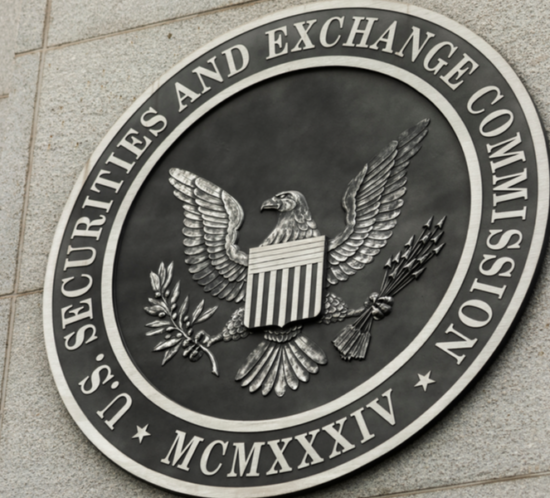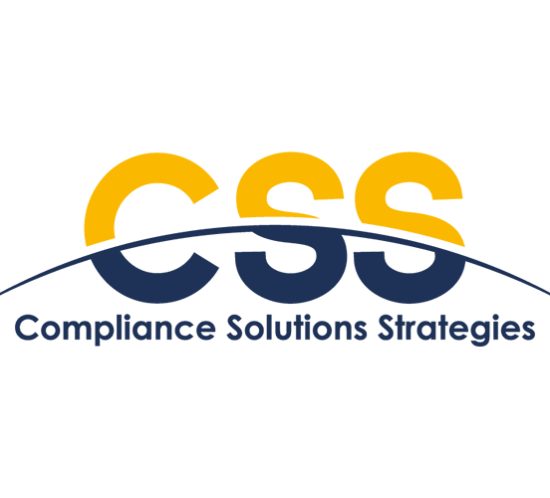Brexit – A Free Trade Deal, Yet the Saga Continues
The UK and EU have finally agreed to terms on Brexit that will likely lead to ratification of an historically important UK:EU free trade deal. So where does this leave financial services and more specifically the investment and fund industry?
The quick answer is that it leaves the industry in a form of limbo. Why pray tell? Or more importantly – what pray tell does this mean for our industry?
For whatever reason, financial services seems to have been broadly left to the side from Brexit, for handling later as part of a broader determination of equivalence. This all seems very strange when so much effort was expended on ‘fishing rights,’ which while a politically charged and hot topic, is an industry that pales in comparison to the financial services industry.
A quick run through on the known knowns:
- Passporting and automatic access to markets as it existed for UK firms in the EU, and likewise EU firms in the UK, has now ended. Firms that relied on passporting now need to apply to the relevant states where memoranda of understanding (MOUs) exist between the relevant counties to continue operations. Financial services were not specifically included in the deal to the extent many had hoped and where it leaves us is with conditions one might have expected in WTO (World Trade Organization) GATS (Global Agreement on Trades & Services).
- We do know that the EU and UK are determined to arrive at a conclusion on equivalence before the end of March 2021. A joint declaration draft has been agreed that states the UK and EU will agree by March 2021 an MOU establishing the framework for regulatory co-operation on financial services. Rishi Sunak (UK Chancellor) was quoted by the Guardian as being confident “Because there is a stable regulatory framework mentioned in the deal.” The equivalence route many firms are faced with is less than ideal as equivalence arrangements are subject to a 30-day notice of withdrawal.
- While the agreement does not specifically mention any limits being set on delegation, which is seen as a win for the UK portfolio management industry, this could and will likely rear its head again as part of future reviews of by ESMA of AIFMD and UCITS.
- New York will likely see a rise in UK/EU derivative trading as EU firms can no longer use UK venues to trade Euro denominated shares and derivatives from January 4, 2021. Why so? Because New York has been deemed equivalent for such activity, although the FCA indicated as late as 31st December, that where firms that are subject to the UK DTO (Derivatives Trading obligation) trade with, or on behalf of, EU clients that are subject to the EU DTO, they will be able to transact or execute those trades on EU venues.
So the certainties are that we are going to see more uncertainty, more fragmentation of trading venues and activity, potentially divergent regulatory regimes and a weakening of the single market concept for financial services, which was primarily architected by the UK and the continuation of the Brexit saga for the funds industry until at least March 2021…
SEC Adopts Changes to Marketing and Cash Solicitation Rule Frameworks
In late 2022, SEC registered investment advisers will be required to comply with new marketing and client solicitation rule-making, adopted today. The SEC adopted amendments to Rule 206(4)-1 that merge existing marketing and cash solicitation rules under the Investment Advisers Act of 1940 – rules that had originally been adopted in 1961 and 1979, respectively. The new rule-making will lead to the elimination of scores of no-action letters that the industry previously relied upon as the basis for performance advertising, and the use of third-party rankings and endorsements. The rule-making also has corresponding amendments to the Books and Records Rule, and amends Form ADV with additional questions about RIAs’ marketing activities.
By adopting new rules, the SEC continues its efforts to “modernize” numerous rules that had not been updated in decades. The SEC has used the word “modernize” six times in its recent press release titles, including the announcement of rule changes covering marketing and cash solicitation rules (12.22.20), the market infrastructure covering equity market data (12.9.20), fund valuation practices (12.3.20), the framework for securities offerings (11.24.20), financial disclosures (11.19.20), and derivatives use by registered funds and BDC’s (10.28.20). In today’s press release, Chairman Jay Clayton stated: “’The marketing rule reflects important updates to the traditional advertising and solicitation regimes, which have not been amended for decades, despite our evolving financial markets and technology[.] This comprehensive framework for regulating advisers’ marketing communications recognizes the increasing use of electronic media and mobile communications and will serve to improve the quality of information available to investors. The new rule provides for an extended compliance period intended to provide advisers with a sufficient transition period, including to enable consultation with the Commission’s expert staff.’”
Some highlights of changes in the marketing rules include:
- Testimonials will be permitted with appropriate disclosures.
- Gross performance presentations will no longer be permitted in one-on-one settings.
- Performance information will be subjected to a new standardized set of requirements.
General prohibitions under new Rule 206(4)-1(a) are:
An advertisement may not:
(1) Include any untrue statement of a material fact, or omit to state a material fact necessary in order to make the statement made, in the light of the circumstances under which it was made, not misleading;
(2) Include a material statement of fact that the adviser does not have a reasonable basis for believing it will be able to substantiate upon demand by the Commission;
(3) Include information that would reasonably be likely to cause an untrue or misleading implication or inference to be drawn concerning a material fact relating to the investment adviser;
(4) Discuss any potential benefits to clients or investors connected with or resulting from the investment adviser’s services or methods of operation without providing fair and balanced treatment of any material risks or material limitations associated with the potential benefits;
(5) Include a reference to specific investment advice provided by the investment adviser where such investment advice is not presented in a manner that is fair and balanced;
(6) Include or exclude performance results, or present performance time periods, in a manner that is not fair and balanced; or
(7) Otherwise be materially misleading.
We will all be writing new policies and procedures, and new disclosures, over the next more than a year and a half. The Compliance Date is 18 months after the Effective Date of the rules. The Effective Date is 60 days after publication in the Federal Register. No need to panic now, but lots of work ahead. For more information on this new rule, please contact our regulatory experts.
CSS Hosts OCIE Director Pete Driscoll for a Virtual Fireside Chat
SEC’s Office of Compliance Inspections and Examinations Cites Inadequate Compliance Programs
On December 1, 2020, CSS hosted a discussion with Peter Driscoll, Director of the SEC’s Office of Compliance Inspections and Examinations (OCIE). Stephanie Monaco, Partner of Mayer Brown, LLP engaged in a productive discussion with Mr. Driscoll, followed by commentary from Jim Anderson of Willkie, Farr & Gallagher LLP, CCO Annie Lazarus of Landmark Partners, and CCO Adan Araujo of Jasper Ridge Partners. A recording of the ComplianceCastTM is available here.
On November 19, 2020, the OCIE had released its 9th Risk Alert of the year, “OCIE Observations: Investment Adviser Compliance Program.” This latest risk alert identified examples of “notable” deficiencies observed by OCIE staff in examinations. The SEC’s observations reflect investment advisers’ difficulty maintaining adequate regulatory expertise and resources to implement compliance program requirements.
Director Driscoll and Attorney Monaco discussed the finer points of the recent risk alert, the SEC’s new Event and Emerging Risk Examination Team (EERT), Form CRS takeaways, and OCIE’s 2021 priorities. Among the topics in the deep dive were OCIE staff expectations for evidence of annual reviews, the transparency of reporting internally discovered compliance violations to OCIE staff, and any perceived risks for CCOs with dual roles and responsibilities.
On November 19, 2020, the SEC also held its annual Compliance Outreach Program National Seminar, and OCIE Director Pete Driscoll led off by discussing the risk alert. Key among his talking points that day was a discussion of the necessary senior management commitment to maintain a culture of compliance, and the mandate that CCO’s are empowered and have adequate seniority and authority within a firm. OCIE Director Driscoll provided the following staff observations about CCOs:
We notice on exams when firms hire someone for the role to check the box but do not support or empower them. We notice when a CCO holds one or more roles in a firm and is inattentive to their compliance responsibilities. We notice when a firm positions a CCO too low in the organization to make meaningful change and have a substantive impact, such as a mid-level officer or placed under the CFO function. We notice when CCOs are expected to create policies and procedures, but are not given the resources to hire personnel or engage vendors to provide systems to implement those policies and procedures. We notice when a CCO is replaced because they challenge questionable activities or behavior. We notice when a CCO is trotted out for an examination or sits silently in the corner in compliance discussions, overshadowed by firm senior officers. We notice when a firm puts responsibility on the CCO for a failure of an employee or an officer to follow a firm policy or procedure.
The risk alert summarized six key failings observed by OCIE staff:
- Inadequate Compliance Resources, including CCOs without time or knowledge to fulfill their responsibilities as CCO, compliance staff without adequate resources, and insufficient compliance staff to account for firms’ growth.
- Insufficient Authority of CCOs, including CCOs without access to critical information, limited interaction with senior management, and lack of involvement of CCOs by senior management regarding matters that had compliance implications.
- Annual Review Deficiencies, including a lack of documentation, annual reviews that did not address key risks, and annual reviews that did not address key areas of the business.
- Implementing Actions Required by Written Policies and Procedures, including advisers that did not train employees, implement procedures covering critical areas, review advertising materials, follow compliance checklists and processes, and review client accounts.
- Maintaining Accurate and Complete Information in Policies and Procedures that included outdate or inaccurate information about the adviser, including off-the-shelf policies and procedures.
- Maintaining or Establishing Reasonably Designed Written Policies and Procedures, including written policies and procedures that were cursory or were not tailored to the firm’s business. The risk alert cited each of the primary areas that the original Compliance Programs Rule adopting release suggested as requiring written policies and procedures.
In his remarks at the National Outreach Program, OCIE Director Driscoll also commented on the overall success of the industry and OCIE to adapt to pandemic working circumstances. He noted that a majority of firms had activated existing business continuity plans and that critical areas of operation were typically covered. He further noted that OCIE had continued with remote examinations and conducted over 2,950 exams in fiscal year 2020 (Sept. 30-Oct. 1), covering 15% of all investment advisers.
In a forewarning, Director Driscoll noted that “remote due diligence on service providers and sub-advisers will require considerable attention,” and new technology adopted during the pandemic brings risks that will require further evaluation by “skilled and knowledgeable compliance departments.”
The post-discussion panel includes remarks by CCO’s Lazarus and Araujo regarding their management of the CCO role and advice to participants. Attorney Anderson also added valuable commentary about handling difficult examinations.
CSS Executive Directors Jacqueline Hallihan and Keith Marks moderated the discussions.
The Moving Target of ESG Regulation in the EU
ESG – the integration of environmental, social and governance considerations into the investment process – has claimed center stage in the financial regulatory space. Global events, and an existing ambitious regulatory agenda, have catapulted ESG to top-of-mind for all parties of the investment management community. The consideration of environmental, social and governance risk in the investment process is often equated with sustainability on a longer time horizon. This year, sustainability has taken on a new level of importance for many investors faced with the confluence of the global COVID-19 pandemic, large-scale protests against racial injustice and climate events such as the Australian and US West Coast wildfires. Investors have as a result quadrupled inflows into ESG products in 2020.
The European Union has led the global movement towards ESG regulation since concretizing its goals in its 2018 Action Plan on Sustainable Finance. Despite recent global events, the EU has maintained a seemingly hawk-eyed focus on progressing the Action Plan by:
- Reaching political agreement on its keystone legislation, the so-called EU Taxonomy Regulation, that will create an EU classification system for identifying and comparing “green” economic activities
- Publishing draft Level 2 regulatory technical standards developed by the three European Supervisory Authorities (the ESAs) under the Sustainable Finance Disclosure Regulation
- Consulting on the review of the Non-Financial Reporting Directive and revisions needed for coherence with the other sustainability legislation; and
- Publishing proposed amendments to the specific financial sector regimes – e.g. UCITS, AIFMD and MiFID II – requiring asset managers and to integrate ESG considerations
Monitoring these developments has already kept the financial sector quite busy. Yet much of the EU legislation remains only in consultation or planned stages, and thus much more work is required before the ESG regulatory standards that will govern the industry for the foreseeable future are fully developed. Today’s post focuses on the SFDR. Future blogs will examine other pieces of the EU’s sustainable finance legislative package.
The SFDR establishes the first ESG compliance deadlines and will usher in a wide range of new requirements on EU financial market participants and financial advisers. All EU financial market participants (including UCITS and AIF managers) and financial advisers will be required to consider ESG risks and disclose how such sustainability risks are integrated in their investment decision-making process. Disclosures will be required at the entity-level regarding the firm’s sustainability policy, remuneration policy and policy on the consideration of principal adverse sustainability impacts. The requirements around the principal adverse impacts may prove to be the market’s biggest “bugbear,” as discussed further below.
At the product level, the nature of the new disclosures will depend on the extent to which the product can be considered an ESG product. In-scope financial products include, among others, AIFs, UCITS, pension schemes and insurance-based investment products. For financial products with an ESG focus, the SFDR (as amended by the EU Taxonomy Regulation) specifies two types. So-called Article 8 products are financial products that promote environmental and/or social characteristics and will require disclosures as to how the environmental and social characteristics of the product are met. Article 9 products are financial products with a sustainability objective and disclosures will be required on the specific objectives and how these objectives are met by the product. The first of these product disclosure obligations come due on 10 March 2021. Therefore, well before the initial disclosures date, firms will need to consider sustainability risks and, in relation to financial products, undergo a scoping exercise to classify their products into the three categories for the purpose of SFDR disclosures: Article 8, Article 9 or non-ESG.
A major difficulty in meeting the disclosure deadlines is that details as to the specific requirements have not yet been finalized by the European authorities. The preview provided to the market through ESA consultations on Level 2 guidance indicates an extensive data collection, integration and reporting exercise. In April 2020, the ESAs consulted on a proposed set of disclosure standards under the SFDR. Drawing the most attention was the proposal for a mandatory template to report on the principal adverse sustainability impacts, the principal adverse impacts statement (PAIS), required by all entities falling under the SFDR. The proposed PAIS template included some 32 mandatory indicators, 16 of them related to environmental factors and 16 relating to social and employee matters, with an additional 18 “opt-in” data points for consideration. The regulators’ view was that the 32 data points, covering issues such as greenhouse gas emissions and water use, would always lead to principal adverse impacts and would therefore always be disclosed. A subsequent consultation in September 2020 on the proposed template for ESG product disclosures drew less attention but revealed again that the ESAs have an extensive disclosure exercise in mind. The ESA survey sought feedback on a proposed universal template involving 16 questions to be answered in narrative form. Numerous industry groups and other respondents raised concerns about the desirability of such a granular level of disclosure and the difficulty of obtaining responsive data in a regulatory environment that does not yet require its disclosure.
The industry now awaits final guidance on the form of the entity PAIS template and ESG financial product templates, but it will not arrive before the SFDR takes effect on 10 March 2021. The European Commission has announced that final Level 2 guidance will be delayed, ostensibly because of the extended consultation period needed as a result of the COVID-19 pandemic, but no doubt also due to the largely negative industry feedback to the proposed form and detail of disclosures. The Commission letter to the ESAs confirming the delay indicates that Level 2 requirements are expected to become effective at an undetermined later date, but no earlier than January 2022.
Considering the scope of the draft Level 2 technical standards, this delay is at least a temporary reprieve. Initial disclosures derived solely from the SFDR Level 1 text should be “high-level and principles-based,” per the Commission letter. Firms will need to decide for themselves how detailed the initial round of policy and ESG product disclosures will be and resolve questions such as to what extent can and should a firm rely on draft Level 2 guidance. Whatever the outcome, it is likely that the disclosures for the SFDR disclosures made in 2021 will be made in two rounds – first, as high-level, principles-based disclosures and later, as more granular disclosures responding to final Level 2 guidance.
The foregoing describes the shifting compliance challenge only under the SFDR. The SFDR requirements will continue to evolve as the legislation with which it interacts also evolves, including the EU Taxonomy Regulation that details criteria on what constitutes sustainable activities and the Non-Financial Reporting Directive that will ultimately impose the granular disclosure requirements on EU issuers. In short, ESG regulation in the EU will be a dominant theme for the months and years ahead.
Timeline of EU ESG Regulation:
10 March 2021: First disclosures under SFDR, including:
- Entity-level sustainability risks policy
- Entity-level updated remuneration policy
- Entity-level principal adverse impacts policy (comply-or-explain)
- Product-level disclosures in pre-contractual documents for ESG products (Article 8/9 products)
30 June 2021: Disclosure of entity-level principal adverse impacts policy for large firms (> more than 500 employees) (comply)
End 2021: Expected effective date of proposed amendments to MiFID, AIFMD, UCITS, IDD and Solvency II requiring sustainability considerations at organizational level, in suitability assessment and product governance requirements
1 January 2022: Product disclosures under SFDR and EU Taxonomy Regulation, including:
- Product disclosures relating to climate change objectives
- Product-level disclosures in periodic reporting on ESG characteristics and/or sustainability objectives.
30 June 2022: Disclosure of entity-level statement on principal adverse impact statements
30 December 2022: Disclosure of product-level statement on principal adverse impact statements
For more information on ESG or to speak to one of our Regulatory Guidance experts, please email: info@cssregtech.com.
Form CRS – Client Success
XML Securities, LLC, a full-service broker-dealer and its affiliate investment advisor, XML Financial Group, were challenged to compile compliant and accurate information while interpreting and understanding the SEC’s Form CRS robust requirements and implementing by June 30, 2020. Learn how CSS’s Form CRS Automator was able to automate the firm’s Form CRS while still providing the needed customization and intuitive user experience.
See the achieved business results:
Transaction Reporting – Client Success
A global Tier 1 asset manager decided to take a more holistic approach to their regulatory reporting by moving from multiple vendors to one full strategic partner. Over the years, the client had implemented a variety of in-house and point solutions to stay compliant. As a first strategic step, the firm decided to replace their existing transaction reporting solutions for EMIR, MiFID II and SFTR after struggling to gain control and have full transparency of their regulatory reporting.
See the achieved business results:








